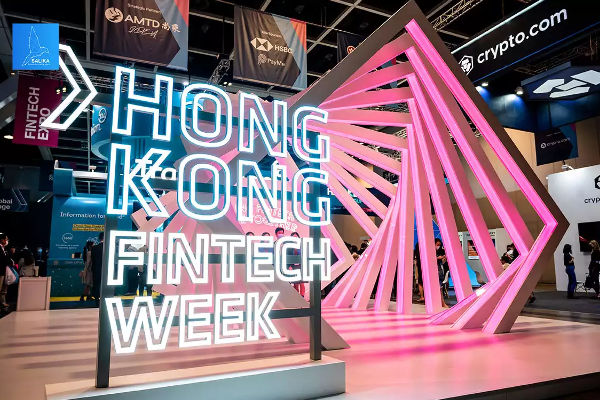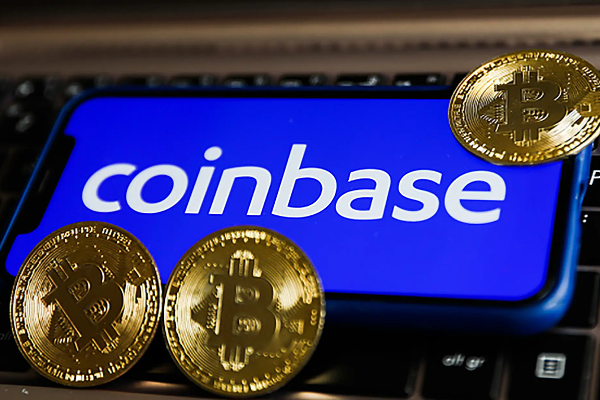The friend circle of crypto VCs: Who is the best CP to invest in projects together?

This is a brief version of our newsletter on Decentralised.co. We look at how crypto venture capital firms (VCs) choose to co-invest and the historical patterns of their investment strategies. The tool can be accessed here.
As an asset class, VCs follow an extreme power law. However, the exact extent of this is not studied in depth because we are always chasing the latest narrative. In the past few weeks, we created an internal tool to track the network of all crypto VCs. But why do it?
The core logic is simple. As a founder, knowing which VCs frequently co-invest can save you time and optimize your fundraising strategy. Every deal is a fingerprint. When we visualize them on a graph, we can reveal the story behind it.
In other words, we can track down the nodes responsible for most of the capital raised in the crypto space. We try to find the ports in the modern trade network, which is not different from the merchants thousands of years ago.
We think this is an interesting experiment for two reasons.
1. The VC network we run is a bit like Fight Club. Although no one fights (yet), we don’t talk about it often either.
This VC network includes about 80 funds. Across the entire crypto VC space, there are about 240 funds that deploy more than $500,000 at the seed stage. That means we reach a third of them directly, and almost two-thirds of the people who read our content. This is an impact I hadn’t expected, but it’s true.
Still, it’s often hard to track who’s actually deploying capital where. Sending founder updates to every fund becomes noise.
This tracker emerges as a filtering tool to help us understand which funds have deployed capital, in which sectors, and with whom.
2. For founders, understanding where capital is deployed is just the first step. Even more valuable is understanding how these funds perform, and with whom they typically co-invest.
To do this, we calculated the historical probability of a fund’s investments receiving follow-on investment, although this becomes fuzzy at later stages (such as Series B) because companies typically issue tokens rather than raise traditional equity.
Helping founders identify which investors are active in crypto VC is the first step. The next step is to understand which sources of capital perform better. Once we have this data, we can explore which funds co-invest to get the best results.
This is certainly not rocket science.
No one is guaranteed to get a Series A round just because someone wrote a check. Just like no one is guaranteed to get married after a first date. But it certainly helps to know what you’re getting into, both in dating and venture capital.
Build a Successful Architecture
We use some basic logic to identify the funds that see the most follow-on rounds in their portfolio. If a fund sees multiple companies successfully raise money after its seed round, it’s probably doing something right. When companies raise money at higher valuations in the next round, the value of VCs’ investments goes up. Therefore, follow-on rounds can be a good indicator of performance.
We took the 20 funds with the most follow-on rounds in their portfolios and then counted the total number of companies they deployed at the seed stage. You can effectively calculate the probability of a founder getting a follow-on round. If a company has 100 seed checks and 30 of them get a follow-on round within two years, we calculate its probability of advancing to 30%.
The caveat here is that we limit the time period to two years. Often, startups may choose not to raise money at all, or raise money after this period.
Even among the top 20 funds, the power law is still quite extreme.
For example, raising money from A16z means you have a one in three chance of raising again within two years. That means one in three startups backed by A16z will go on to raise a Series A.
Considering the 1 in 16 chance at the end of this list, that’s a pretty high graduation rate.
Venture funds ranked near the 20th on this list of the top 20 follow-on funds have a 7% chance of their portfolio companies raising again. These numbers may seem similar, but to put them in context, a one in three chance is like rolling a number less than three when rolling a dice, while a 1 in 14 chance is roughly equivalent to the chance of having twins. These are very different outcomes, both literally and probabilistically.
All joking aside, this shows the level of aggregation within crypto venture funds. Some venture funds are able to structure follow-on rounds for their portfolio companies because they also have growth funds.
As a result, they deploy seed and Series A rounds in the same company. When a venture fund doubles down on a larger stake in the same company, it usually sends a positive signal to investors in subsequent rounds.
In other words, the presence of growth-stage funds within VC firms significantly impacts the odds of a company’s success in the coming years.
The long-tail effect of this trend is that crypto venture funds are evolving into private equity investments in projects with significant revenues. We’ve theorized about this shift. But what does the data really show? To examine this, we considered the number of startups in our investor base that received follow-on rounds. We then calculated the fraction of companies that the same venture fund participated in in a follow-on round.
That is, if a company raised seed funding from A16z, what is the probability that A16z will invest capital again in its Series A?
The pattern quickly emerged. Large funds managing more than a billion dollars tend to make frequent follow-on investments. For example, 44% of the startups in the A16z portfolio that went on to raise more capital saw A16z participate in a follow-on round. Blockchain Capital, DCG, and Polychain made follow-on investments in a quarter of their refinancing investments.
In other words, who you raise money from at the seed or pre-seed stage matters more than you might think, because these investors tend to back their own companies more frequently.
Habitual Co-investment
These co-investment patterns are drawn from the benefit of hindsight. We are not implying that companies that raise money from non-top VCs are doomed to fail. The goal of all economic activity is to grow or generate profits. Businesses that can achieve either of these will see their valuations rise over time. This, of course, helps increase your odds of success. If you can’t raise money from this top 20 investor group, one way to increase your odds of success is through their networks, or in other words, to connect with these capital hubs.
The following chart shows the network of all venture investors in the crypto space over the past decade. There are 1,000 investors, sharing about 22,000 connections with each other. If one investor co-invests with another, a connection is formed. This may seem crowded, or even like there are too many choices. However, this also includes funds that have died, never returned capital, or are no longer deployed.
It’s confusing, I know.
However, the reality as the market develops becomes clearer in the following chart. If you are a founder looking to raise a Series A, there are about 50 pools of funds that invest in rounds of more than $2 million. The network of investors who have participated in such rounds is about 112 funds. These funds are gradually concentrated, showing a stronger preference for co-investing with specific partners.
From the seed round to the A round of financing, you can raise funds from a large number of investors. Over time, funds tend to form a habit of co-investment. That is, when a fund invests in a certain entity, it usually brings a peer fund with it, either because of complementary skills (such as technical support or marketing) or based on a partnership. To study how these relationships work, we started to explore the co-investment patterns between funds in the past year.
For example, in the past year:
Polychain and Nomad Capital have 9 co-investments.
Bankless has 9 co-investments with Robot Ventures.
Binance and Polychain have 7 co-investments.
Binance has the same number of co-investments with HackVC.
Similarly, OKX and Animoca have 7 co-investments.
Large funds are becoming more and more picky about their co-investment partners.
For example, Robot Ventures participated in three of Paradigm’s 10 investments last year. DragonFly shared three rounds with Robot Ventures and Founders Fund out of its total of 13 investments.
Similarly, Founders Fund co-invested with Dragonfly in three of its nine investments.
In other words, we are gradually entering an era where a small number of funds are making large investments with fewer co-investors. And many of these co-investors tend to be well-known funds that have been around for a while.
Enter the Capital Matrix
Another way to look at the data is to analyze the behavior of the most active investors. The matrix above considers the funds that have invested the most since 2020 and the relationship between them. You will notice that accelerators (such as Y Combinator or Outlier Venture) have very few co-investments with exchanges (such as Coinbase Ventures).
On the other hand, you will also find that exchanges generally have their own preferences. For example, OKX Ventures has a high degree of co-investment with Animoca Brands. Coinbase Ventures has more than 30 investments with Polychain and an additional 24 investments with Pantera.
There are three structural phenomena we see:
Despite the high investment frequency, accelerators tend to co-invest less with exchanges or large funds. This may be due to stage preference.
Large exchanges tend to prefer growth-stage venture funds. Currently, Pantera and Polychain dominate this.
Exchanges tend to work with local players. OKX Ventures and Coinbase show different preferences in the selection of co-investment partners, which highlights the global nature of capital allocation in Web3.
So if venture funds are clustering, where will the next marginal capital come from? An interesting pattern I noticed is that enterprise capital has its own clusters. For example, Goldman Sachs has shared 2 investments with PayPal Ventures and Kraken in its life cycle. Coinbase Ventures has 37 co-investments with Polychain, 32 with Pantera, and 24 with Electric Capital.
Unlike venture capital, enterprise capital pools are generally for growth-stage companies with significant product market fit (PMF). So it remains to be seen how this pool of capital behaves during a period of declining early-stage venture funding.
Evolving Networks
From The Square and the Tower
I started wanting to study networks of relationships in crypto after reading Niall Ferguson’s The Square and the Tower a few years ago. The book reveals how the spread of ideas, products, and even diseases are linked to networks. It wasn’t until a few weeks ago when we built the funding dashboard that I realized it was possible to visualize the network of connections between sources of capital in crypto.
I think these datasets and the nature of the economic interactions between these entities could be used to design (and execute) M&A and token acquisitions of private entities. These are directions we are exploring internally. They could also be used for business development and partnership initiatives. We are still working on how to make these datasets accessible to specific firms.
Back to the point: Do networks really help funds outperform?
The answer is a bit complicated. A fund’s ability to select the right team and provide sufficient scale of capital will be more important than its access to other funds. What really matters is the personal relationships that the general partner (GP) has with other co-investors. VCs don’t share deal flow with tokens, they share it with people. When a partner switches funds, the connection transfers to their new fund.
I had some hunches about this, but had limited means to verify the thesis. Fortunately, there is a paper in 2024 that looks at the performance of the top 100 VCs over time. In fact, they looked at 38,000 investment rounds involving 11,084 companies and even analyzed seasonal changes in the market. The core of their thesis comes down to a few facts:
Past co-investments do not necessarily translate into future collaborations. Funds may choose not to work with another fund if a previous investment failed.
In times of mania, co-investments tend to increase because funds want to deploy more aggressively. In times of mania, VCs rely more on social signals and do less due diligence. During bear markets, funds deploy cautiously and often go it alone because valuations are lower.
Funds choose peers based on complementary skills. Therefore, crowded rounds where investors have the same expertise usually cause trouble.
As I said before, ultimately, co-investment does not happen at the fund level, but at the partner level. In my own career, I have seen individuals switch between organizations. The goal is often to work with the same people no matter which fund they join. In an age where AI is taking over human jobs, it’s helpful to know that relationships are still fundamental to early-stage venture investing.
There is a lot more research to be done on the formation of crypto venture capital networks. For example, I would like to study the preferences of liquid hedge funds in capital allocation, or how late-stage deployment in crypto evolves with market seasonality, or how M&A and private equity are involved. The answers are in the data we have today, but it takes time to ask the right questions.
As with many other things in life, this will be an ongoing inquiry, and we will make sure to reveal the signal when we find it.









